Introduction
Imagine an AWS user in your environment escalates privileges by assuming a role (calling sts:AssumeRole) and performs a malicious action. How will you know in the first place and how will you find the offending user in order to remediate the situation?
CloudTrail of course. But you find that the event logged for the malicious action tells you the role and not necessarily the original user. To find that user, you need to go back to CloudTrail and find a different, earlier event logged for the AssumeRole call. Finding and correlating two events in CloudTrail or your SIEM is not necessarily difficult, as long as you have CloudTrail configured properly, secured it, have its events in an optimized and indexed data store with enough retention, and know what to look for.
Well, AWS has made all of our lives a little easier. On April 21, 2020, AWS released a new IAM policy condition that, when configured properly, will force the user assuming the role to include their username, which will then be logged in the event every time the user performs an action with that role. Now, only one event needs to be looked at and the user is clearly logged in one of the CloudTrail event fields.
This blog post clarifies how to make use of this new feature to improve clarity of CloudTrail logging for the purposes of incident response and investigations. This will also make it easier to do any analysis on CloudTrail events since identifying the username/owner of a role-based action no longer requires correlation with another event.
The Old Way
CloudTrail Action Event
Here’s a CloudTrail event for a user that has escalated privileges with sts:AssumeRole and is listing objects in an S3 bucket:
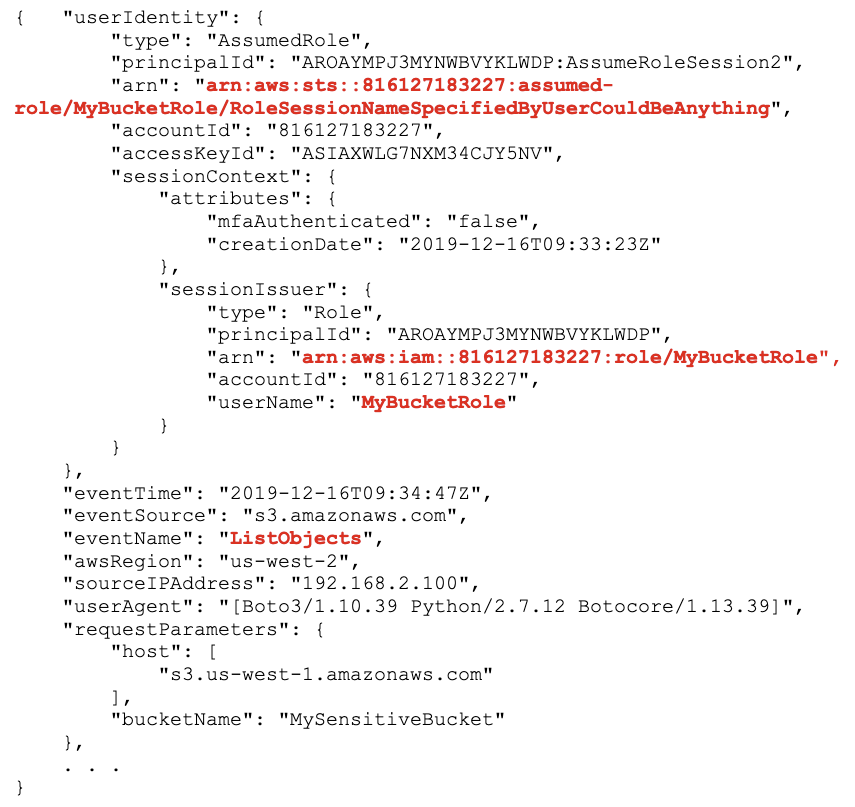
We know the action taken is ListObjects on the bucket, MySensitiveBucket, but we don’t know who exactly is taking this action. We know they are using a role, MyBucketRole, but that’s about it.
CloudTrail AssumeRole Event
To figure out “who” or which IAM user is behind this, we need to go back to CloudTrail and find the earlier event logged when the user actually called sts:AssumeRole. This could be up to 36 hours before the original action event. Assuming we have CloudTrail properly configured and all events stored in an indexed/optimized datastore, perhaps a SIEM, we can query on the same accessKeyId and eventName = “AssumeRole” to find an event like this:
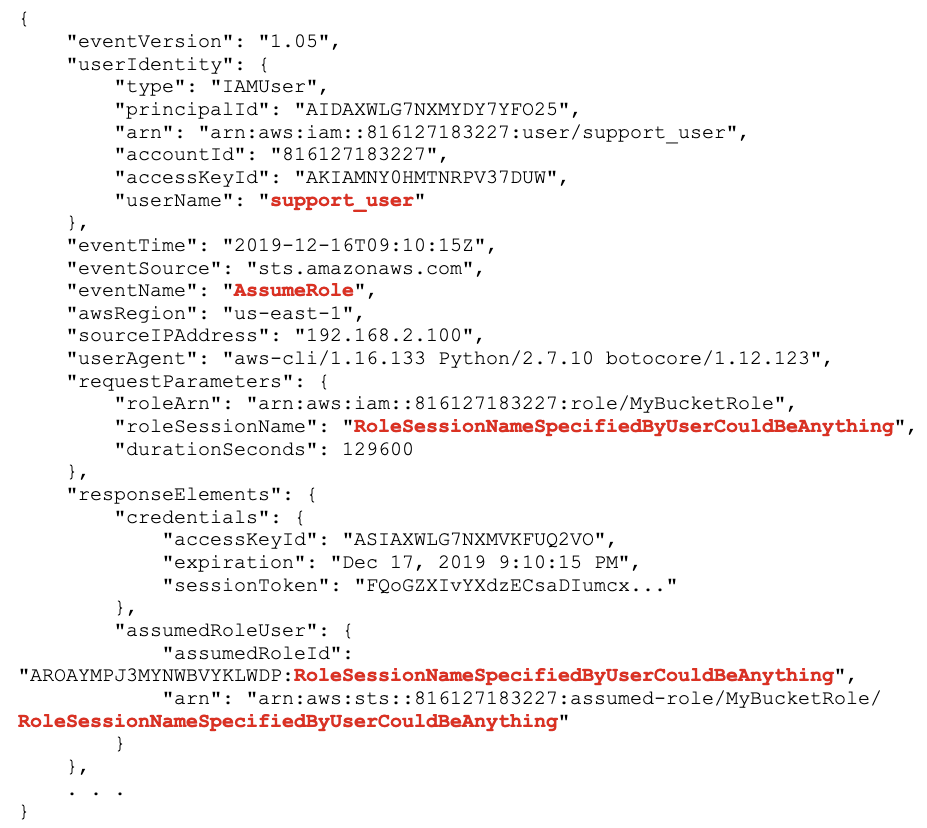
Ahhh, there we are. The userIdentity.userName is “support_user”, that’s who is behind all the terabytes of data leaving our S3 bucket.
The New Way
Condition sts:RoleSessionNameWith the latest IAM changes, we now have a new condition, sts:RoleSessionName which we can use to force a calling user to identify their username when they call sts:AssumeRole. Otherwise, their AssumeRole call will be denied. You use this condition in the role’s Trust Policy. Here’s a slightly-modified example from IAM and AWS STS Condition Context Keys in the IAM documentation:
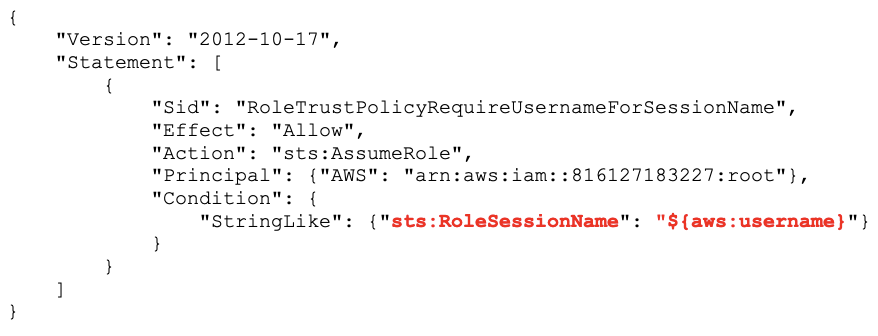
This policy now forces anyone calling sts:AssumeRole on this role to also supply their username as the role session name when calling the API. This field primarily had been for the calling user’s use, and this condition allows us to enforce self-identification for any callers.
CloudTrail Action Event
The role session name will now be the user’s name and will be logged in the userIdentity.arn field in the CloudTrail event:
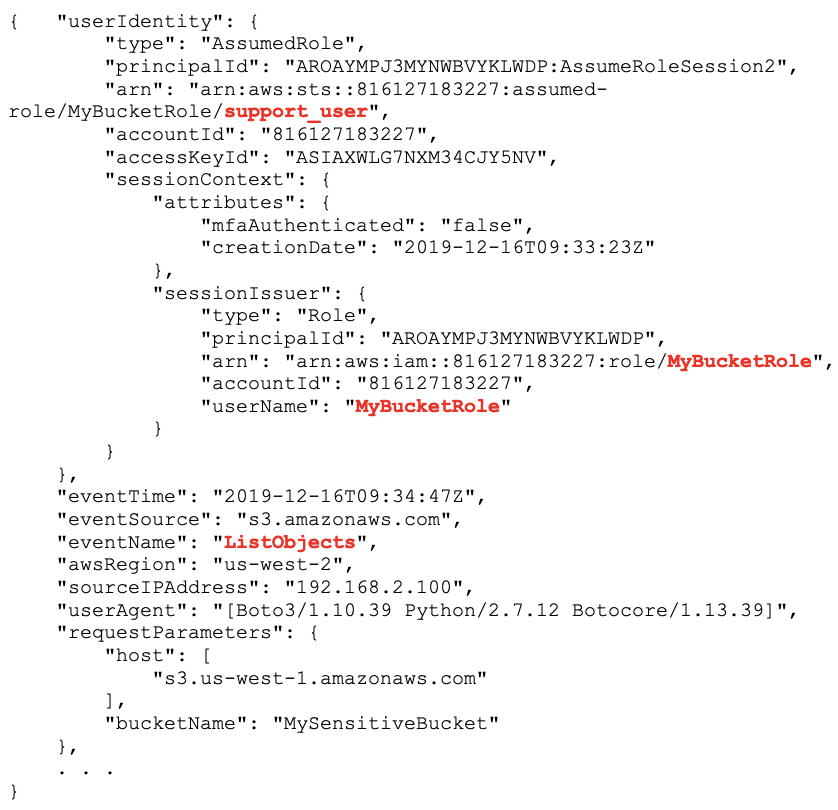
Now, one event says it all: userIdentity.arn is the role arn, which includes the role session name, which was forced to be the user’s name: support_user by our policy condition. It’s now clear which user is accessing MySensitiveBucket using MyBucketRole.
Enforcement
In order to enforce this policy, you can audit your AWS environment using the API/CLI and check all roles that are allowed to be assumed for a trust policy that includes the sts:RoleSessionName condition. Some CLI scripts (e.g. aws iam get-role) running as a job that checks the fields in Role.AssumdedRolePolicyDocument in the returned policy json could be a simple and effective audit check:
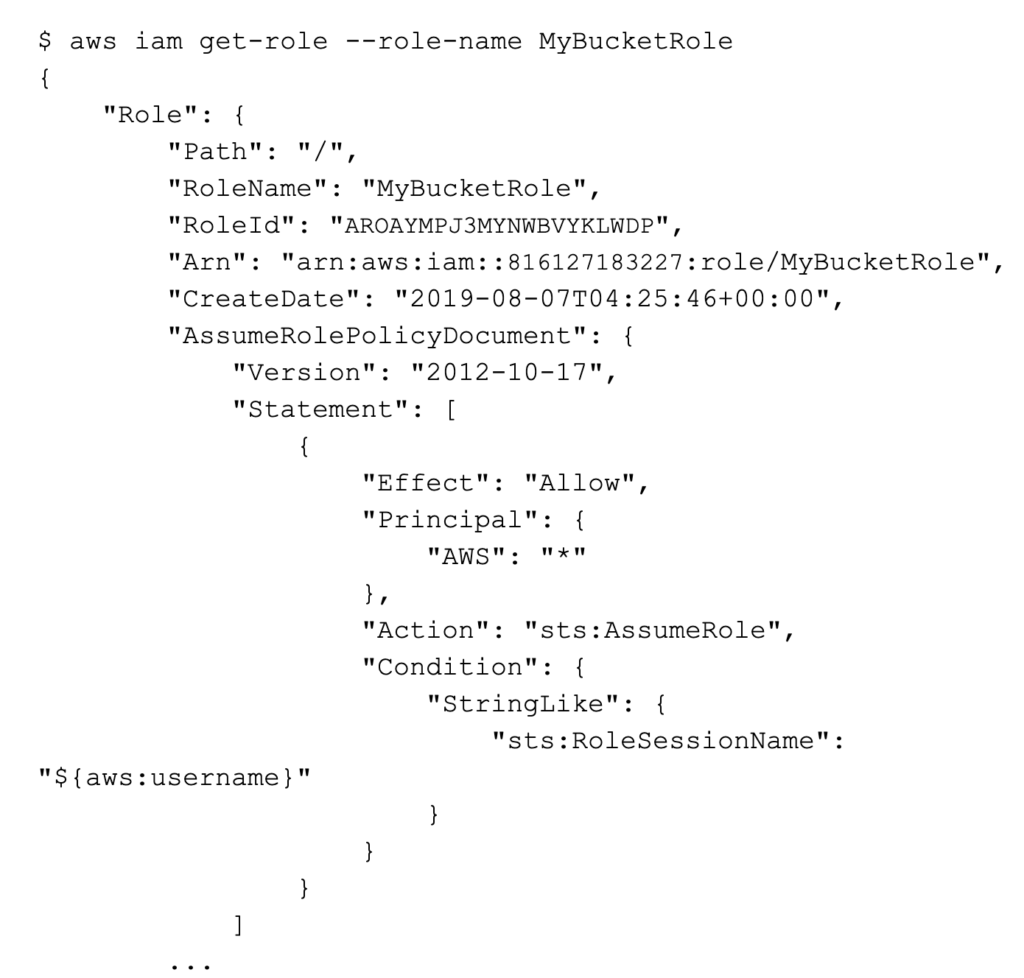
Netskope customers can easily create a custom rule to check and enforce this condition and alert if if any applicable roles are not configured properly:

Conclusion
The policy condition, sts:RoleSessionName, is a small but beneficial new feature that will help you quickly understand the identity of users taking actions as seen in your CloudTrail logs.
At Netskope, we’ve previously blogged about Securing AWS Temporary Tokens, which describes some of the challenges in reducing risk around temporary tokens, including the same challenge in understanding attacker actions from logs.
Using an sts:RoleSessionName condition in all assumed roles should be a mandatory practice as it improves the clarity and simplicity of logged CloudTrail events for actions taken after assuming a role. Given that AssumeRole typically involves the escalation of privileges, it’s even more crucial to have clear and informative logging in place.
Security operations are much simpler dealing with one event with all information vs. dealing with two events correlated over time. Even the best of logging products or systems can lose events, and the best of people can forget the secret decoder rings needed to understand logged events.
We also recommend ensuring that sts:RoleSessionName is incorporated in your role provisioning and IAM change management procedures and that it’s enforced by regular configuration checks.
Finally, it’s a good idea to regularly check the IAM Documentation History to stay on top of the latest changes in IAM which can have a wide-ranging impact on your AWS environment.




 Zurück
Zurück 
















 Den Blog lesen
Den Blog lesen